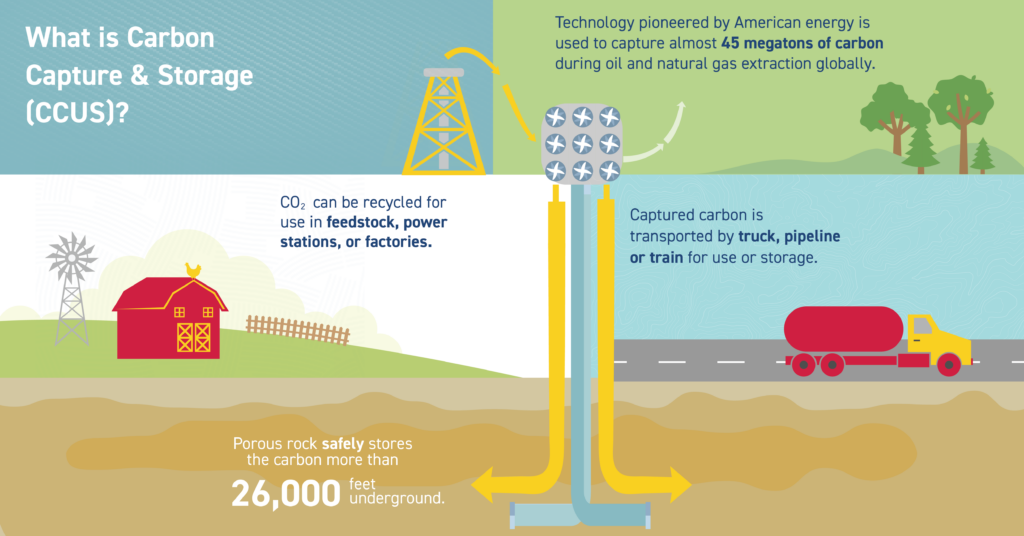Learn More About Carbon Capture and Storage
What is carbon capture and storage?
Carbon capture and storage (CCS) is the process of separating out CO2 generated from industrial sources that would otherwise be released into the atmosphere and injecting it into deep geologic formations for safe, secure, and permanent storage – sometimes the same formations where oil and natural gas were once held for millions of years.

Jobs and Economic Growth: With anti-industry groups campaigning to end oil and gas production in America, CCS is a job defender, helping protect well-paying oil and gas industry jobs and preventing them from going overseas. That way, our industry can still help provide families with good incomes and create revenue in your communities.
Strengthening National Security: In a time of geopolitical unrest, the United States must be able to produce its own energy and refill its strategic energy reserves. CCS enables the development of America’s natural resources while supporting domestic energy security. This helps reduce our dependence on foreign countries like China, Russia, and Iran.
Carbon Capture is a proven technology: The first carbon capture plant was built in 1972 with the technology being discovered and developed as early as 1938, and the technology behind carbon capture has been used by the natural gas and oil industry for more than 40 years – through enhanced oil recovery efforts that have safely injected more than 1 billion tons of CO2, keeping it out of our atmosphere.
Carbon capture and storage has bipartisan support: The Biden Administration has committed to “accelerating the responsible development and deployment of [CCS]… to decarbonize the U.S. economy by mid-century.”
Carbon capture and storage allows the country to remain energy secure by investing in American-made oil and gas while also helping protect our environment. That means creating and sustaining more well-paying jobs for Americans. Republicans have recently endorsed maintaining and expanding tax credits for CCS projects.
CCS Benefits at Number of Sectors: CCS is beneficial for a range of sectors that are difficult to decarbonize – including cement, steel, and manufacturing.
Carbon Capture is well-regulated: Not only is carbon capture and storage a safe, proven technology that has existed for decades, but it is also well-regulated. CCS is subject to a robust regulatory framework, with both federal and state laws potentially playing a part.
EPA’s Underground Injection Control (UIC) program regulates storing CO2 in geological formations, with stringent requirements to help protect the public and the environment. The UIC is complemented by EPA’s Greenhouse Gas Reporting Program, which requires monitoring, reporting, and verification of stored CO2.
On the pipeline side, the federal Pipeline and Hazardous Materials Safety Administration develops and enforces regulations for their construction, operation, and maintenance – as the agency does for natural gas and oil pipelines.
Stay tuned for ways that you can support carbon capture and storage in your state!
Stay in the Loop!

